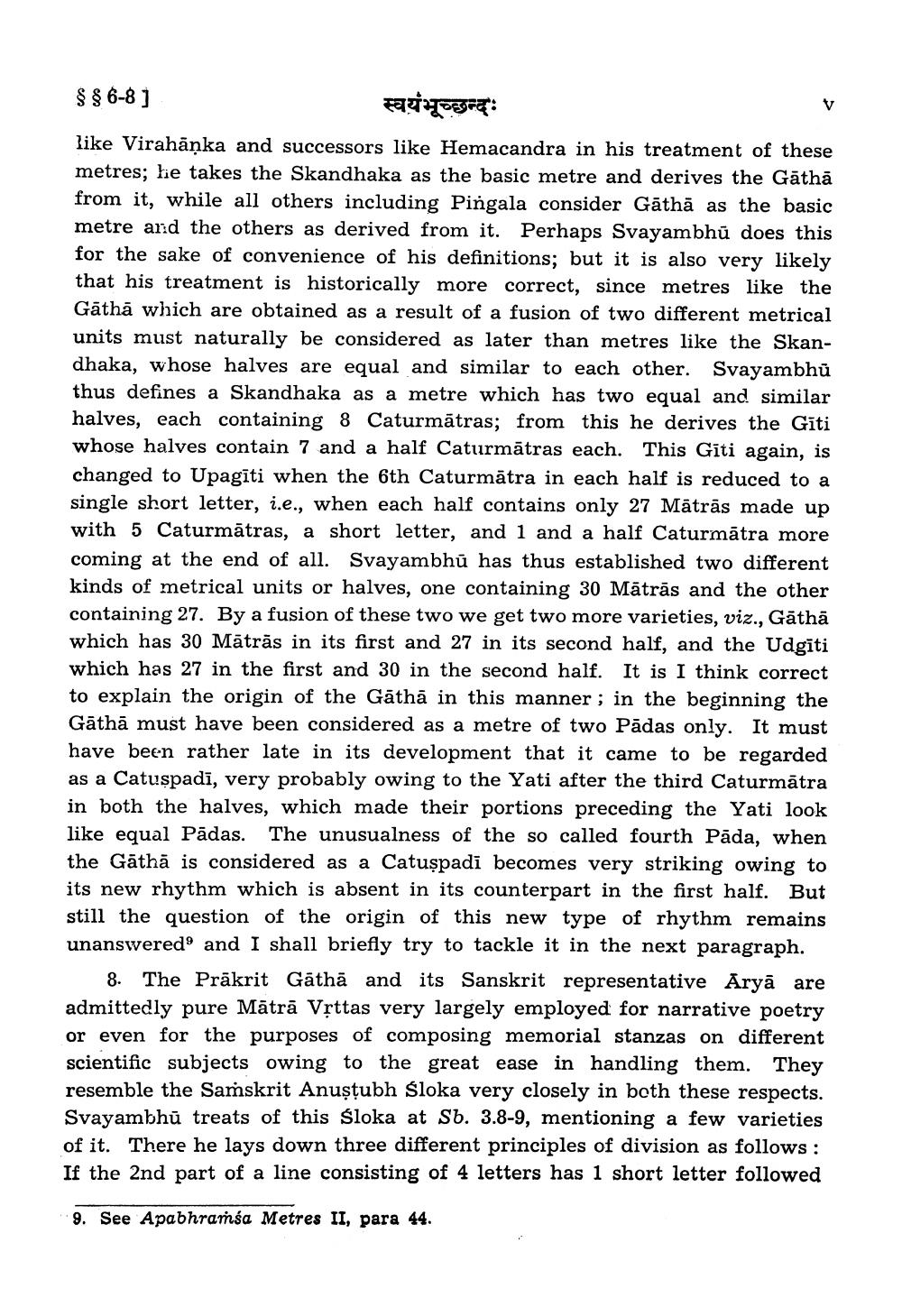________________
$ $ 6-8 )
स्वयंभूच्छन्दः like Virahanka and successors like Hemacandra in his treatment of these metres; he takes the Skandhaka as the basic metre and derives the Gathā from it, while all others including Pingala consider Gāthā as the basic metre and the others as derived from it. Perhaps Svayambhū does this for the sake of convenience of his definitions; but it is also very likely that his treatment is historically more correct, since metres like the Gāthā which are obtained as a result of a fusion of two different metrical units must naturally be considered as later than metres like the Skandhaka, whose halves are equal and similar to each other. Svayambhū thus defines a Skandhaka as a metre which has two equal and similar halves, each containing 8 Caturmātras; from this he derives the Gīti whose halves contain 7 and a half Caturmātras each. This Gīti again, is changed to Upagīti when the 6th Caturmätra in each half is reduced to a single short letter, i.e., when each half contains only 27 Mātrās made up with 5 Caturmātras, a short letter, and 1 and a half Caturmātra more coming at the end of all. Svayambhū has thus established two different kinds of metrical units or halves, one containing 30 Mātrās and the other containing 27. By a fusion of these two we get two more varieties, viz., Gāthā which has 30 Mātrās in its first and 27 in its second half, and the Udgīti which has 27 in the first and 30 in the second half. It is I think correct to explain the origin of the Gathā in this manner; in the beginning the Gāthā must have been considered as a metre of two Pādas only. It must have been rather late in its development that it came to be regarded as a Catuspadī, very probably owing to the Yati after the third Caturmātra in both the halves, which made their portions preceding the Yati look like equal Pādas. The unusualness of the so called fourth Päda, when the Gātha is considered as a Catuspadi becomes very striking owing to its new rhythm which is absent in its counterpart in the first half. But still the question of the origin of this new type of rhythm remains unanswered and I shall briefly try to tackle it in the next paragraph.
8. The Prākrit Gāthā and its Sanskrit representative Aryā are admittedly pure Mātrā Vịttas very largely employed for narrative poetry or even for the purposes of composing memorial stanzas on different scientific subjects owing to the great ease in handling them. They resemble the Saṁskrit Anuştubh śloka very closely in both these respects. Svayambhū treats of this sloka at Sb. 3.8-9, mentioning a few varieties of it. There he lays down three different principles of division as follows: If the 2nd part of a line consisting of 4 letters has 1 short letter followed
9. See Apabhramsa Metres II, para 44.




